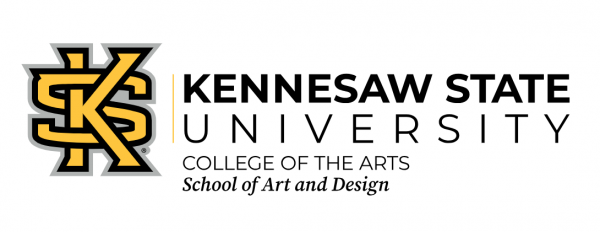

Why study animation at Kennesaw State University (KSU)?
10 Reasons to Choose Kennesaw State University (KSU) for Animation
Affordable Tuition – As a public institution, KSU offers relatively low tuition rates, especially for in-state students, making it a more cost-effective option for animation studies.
Strong Digital Animation Program – KSU offers a Bachelor of Fine Arts (BFA) in Animation with a solid curriculum that covers 3D animation, digital modeling, character design, and storytelling.
Industry-Standard Software & Tools – Students gain hands-on experience with professional software like Autodesk Maya, ZBrush, Adobe Creative Suite, and Blender, preparing them for real-world animation studios.
Access to Internship Opportunities – KSU’s location near Atlanta, a growing hub for tech and entertainment, provides students with opportunities for internships and work experience in animation and gaming.
Collaborative Environment – The program encourages students to work on group projects and collaborate across disciplines, such as game design and media production, simulating industry-style team environments.
Strong Faculty Support – KSU has experienced faculty members who provide personalized attention and mentorship, helping students develop their technical and creative skills.
Strong Focus on Portfolio Development – KSU emphasizes the creation of professional-quality portfolios that can help students land jobs in animation, game design, or VFX.
State-of-the-Art Animation Labs – The university provides access to well-equipped animation labs with high-performance workstations and tools used by professionals in the animation and visual effects industries.
Student Organizations & Networking – KSU has student-run groups, such as the Animation Club, which offer students opportunities for networking, learning from industry professionals, and gaining experience through collaborative projects.
Location & Industry Connections – Being near Atlanta, which has a growing animation and media industry, provides students with access to job fairs, workshops, and local industry events that could help with career development.
10 Reasons Not to Choose Kennesaw State University (KSU) for Animation
Limited Specialization – KSU’s animation program covers a broad range of digital arts, but it may not provide the depth of specialization in areas like 2D animation, stop-motion, or game animation compared to more specialized programs.
Smaller Program with Fewer Resources – As a smaller program, KSU’s animation department may have fewer resources compared to larger institutions, meaning there may be limited equipment, fewer courses, or less individualized attention for specific animation fields.
Less Industry Exposure – While the proximity to Atlanta offers opportunities, KSU may not have the same level of industry connections or internship programs as schools located in major animation hubs like Los Angeles or New York.
Fewer Faculty with Industry Experience – Although the faculty is supportive, KSU may not have as many professors with direct experience in the animation industry, which could impact the level of real-world insight available in the classroom.
Limited 2D Animation Focus – KSU’s program is more focused on 3D animation, meaning students looking for a robust education in traditional hand-drawn animation may need to supplement their learning with personal projects or external resources.
Fewer Networking Opportunities – Compared to more established animation schools, KSU may offer fewer networking opportunities with industry professionals, potentially limiting connections that can lead to internships or jobs.
Lack of Dedicated Animation Studios – KSU’s animation resources, while strong, may not be as extensive as those at other universities with dedicated animation studios, meaning students could face limitations when working on larger or more complex projects.
Less Prestigious Reputation – While KSU offers a solid education, its animation program may not carry the same prestige or recognition in the industry as programs at larger or more well-known art and design schools.
Limited Research Opportunities – KSU may not offer as many opportunities for research or advanced study in the animation or visual effects fields, which could be a drawback for students interested in pursuing innovation or academic careers.
Smaller Alumni Network – Due to the relatively smaller size of the program, the alumni network may not be as expansive or influential in the animation industry compared to larger, more established animation schools.
Final Thoughts
Kennesaw State University offers a cost-effective and well-rounded animation program with a strong focus on digital arts, portfolio development, and industry exposure through internships and local connections. However, students who desire specialized training in areas like traditional animation, stop-motion, or game design may find the program to be too broad and less focused on certain aspects of the animation field.
What is the Single Best Reason to Choose KSU for Animation?
Comprehensive Curriculum with Access to Industry-Standard Tools. KSU's Digital Animation program offers a robust curriculum that encompasses various forms of animation, including traditional animation, 2D and 3D animation, motion graphics, and stop motion. Students gain hands-on experience with industry-standard software and tools, equipping them with the practical skills necessary for a range of careers in the animation industry.
What is the Single Best Reason NOT to Choose KSU for Animation?
Fewer Opportunities for Industry Networking and Studio Access. KSU is not located in a major animation hub, and the program may offer limited direct access to internships, visiting professionals, or partnerships with major animation studios. Students may need to seek out networking and career-building opportunities independently or be prepared to relocate after graduation to pursue industry connections.
Programs to Consider:
- Kennesaw, Georgia
- Top 25 Animation Schools in the South (#19) - 2024
- Top 20 Game Design Schools in the South (#13) - 2024
- Top 50 Illustration Schools in the US (#50) - 2024
- Winter Park, FL & Online
- Top 50 Nationally for Animation (#14) - 2024
- Top 50 Nationally for Game Design (#12) - 2024
- Top 50 Nationally for Graphic Design (#36) - 2024
- Atlanta, Georgia; Savannah, Georgia; Lacoste, France; and SCAD eLearning
- Animation – BFA, MA, MFA
- Film and Television – BFA, MA, MFA
- Graphic Design – BA, BFA, MA, MFA
- Illustration – BA, BFA, MA, MFA
- Immersive Reality - BFA
- Interactive Design and Game Development – BA, BFA, MA, MFA
- Motion Media Design – BFA, MA, MFA
- Sequential Art – BA, BFA, MA, MFA
- Visual Effects – BFA, MA, MFA
- User Experience (UX) Design – BFA
- Top 50 Nationally for Animation (#2) - 2024
- Top 50 Nationally for Game Design (#8) - 2024
- Top 50 Nationally for Graphic Design (#6) - 2024
- Top 50 Nationally for Illustration (#5) - 2024
- Top 25 Nationally for Visual Effects (#2) - 2023
- Indianapolis, Indiana
- Top 40 Nationally among Public Animation Schools and Colleges (#38) - 2024
- Top 25 Animation Schools in Midwest (#18) - 2024
- Top 5 Animation School Programs in Indiana (#3) - 2024
- Top 25 Animation Bachelor's of Science (BS) Degree Programs in the U.S. (#13) - 2024
- Top 25 Nationally among Public Game Design Schools in the U.S. (#25) - 2024
- Top 20 Game Design Schools in the Midwest (#9) - 2024
- Online
- Top 25 International Animation Training Programs (#18) - 2024




